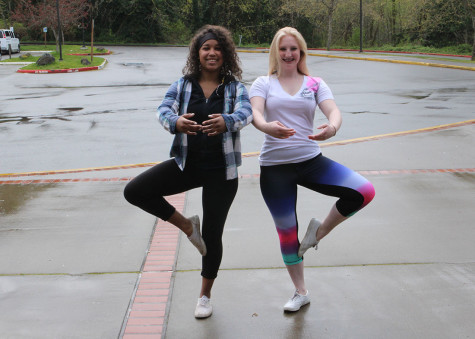Dance: The Brutal Truth
May 18, 2015

The longest workout a person will ever face is the constant stress of dance. Dancers must stay flexible, strong, and courageous. Training for dance is not the same as training for a marathon. These athletes must work every single muscle the body has-muscles a person doesn’t even know they have.
First position, the stance in which the dancer starts for ballet, uses every single muscle and the dancer is standing still. In first position the dancer is standing straight, legs turned out from the inner thighs and hips, heels are touching and toes are out, with rib cage and pelvis tucked in and the chest up. The stomach is engaged, shoulders down, the back muscles are engaged, spine is elongated, arms curved and flexed while appearing soft. The sport is all about preparation. Dancers bench, squat, and do yoga, anything to keep strong and flexible to flow from one dance position to the next. They experience some of the most back-breaking routines.
“I’m going to be in a wheelchair before I’m twenty,” Jessica Graham said, regarding her dance routines. Graham is a dancer for the Peninsula High School Super Hawks Dance Team. Graham has been dancing for 15 years. “You could injure yourself to the point of not dancing or worse, not walking. No one’s body is made for dancing.”
Dance is very dangerous. Graham has injured herself multiple times: sprained ankles, cracked growth plates, and pulled tendons. Inflammation was caused in Graham’s back because she compensated her limited hip flexibility with her back flexibility.
“I’ve learned to deal with the pain. I have bad days and good days,” Graham said. She started to dance when she was two, dancing to her older sister’s music. Her parents saw this and put her in dance classes. She fell in love and has continued ever since.
“You can express yourself without using words,” Graham said.
Her co-dancer Jazlyn Coburn has some different opinions.

“The worst thing is when coach asks you to do something you know could hurt you but you don’t want to not do it because you don’t want to disappoint. You feel old, your body hurts all the time,” Coburn said.
Coburn started dancing three years ago at The Boys and Girls Club. A friend asked Coburn if she had wanted to start a dance program. The two executed the plan and 15 people joined. She soon realized her love for dancing, but began to and continues to feel the real physical strain and danger of the sport.
“Floor works are hardest for me because there’s so many things that can happen like shattering a knee, ankle fractures, bruises,” Coburn said.
Coburn had heard a story from a friend of her’s who broke her leg on stage and still continued with the routine. Ever since, Coburn’s motto is “to keep going while performing, even if injuries occur.”
Dance is clearly a very difficult sport and the stress can go to a dancer’s mind. It’s competitive and while the choreography is based primarily on the whole group’s ability, the choreographer makes the decisions. Days can be long and dancers must have the endurance to keep up.
“I’ve had 12 hour days. I love it,” Graham said.
Dance is a mix between a sport and an art form. Graham and Coburn embody this through their hard work and dedication. Even though these two have different levels of expertise and experience, they can agree on one thing, it’s not easy.














Anthony Bessex • May 18, 2015 at 12:59 pm
Amazing! Well written! Full of info about dancing and how dancer put dancing before physical pain!! I know have a whole new respect for dancers!